Translations 677
Are Men Stronger Than Women?

Are Men Stronger Than Women?
The machismo superimposed on honesty where health is concerned, puts Latin American men, who believe that they do not need to go to the doctor, at risk of suffering serious illnesses and thus put their lives in danger.
By Juventud Rebelde
digital@juventudrebelde.cu
Posted: Saturday, March 3. 2018 | 06:54:26 PM
A CubaNews translation.
Edited by Walter Lippmann.
The machismo superimposed on honesty in health is concerned, makes Latin American men believe that they do not need to go to the doctor at risk of suffering serious illnesses and that they put their lives in danger.
Compared to other regions of the world, the health of Latin American men is more exposed to male chauvinism, believing that they are stronger than women and that they do not need to go to the doctor, puts them at risk of suffering serious and life-threatening illnesses.
This was recently announced by a study prepared by Panamanian specialists and reviewed by the Xinhua news agency.
The research explains that the decline in men’s health compared to women’s health is a global problem with great impact in our geographical area, although there is also a gap in the matter in Africa and Europe.
According to statistics, men in Latin American countries live between eight and 12 years less than women, mainly because the social stigma that considers them to be the head of the household weighs heavily on the lack of accurate reporting on men’s health.
In this region, the prevalence of certain metabolic, cardiovascular and sexual dysfunction diseases affecting men is increasingly noted.
It is common for men in this area of the planet to live less and less, and not only that, but to arrive much more deteriorated in their old age, because they never go to the doctor or have a follow-up visit.
The opposite is true of women, who, because of their preparation, are closely linked to a doctor, a pediatrician or a gynaecologist. Hence, it is the man who most often goes to the doctor with chronic illnesses.
Teachers Demand Raises and Funding

Thousands of teachers in the U.S. demand better salaries and more funding for public schools
Several hundred public schools remained closed this Monday, either because of spring break, or because many teachers decided to leave and their districts allowed them to participate in the mobilization.
Published: Tuesday 03 April 2018 | 09:36:27 AM
A CubaNews translation.
Edited by Walter Lippmann.
WASHINGTON, April 3. Tens of thousands of teachers in Kentucky and Oklahoma came together yesterday in their state capitals to demand more funding for education, salary and pension improvements.
According to USA Today, 120 public schools in the first of those territories remained closed on Monday, either because of spring break, because many teachers decided to leave or because their districts allowed them to participate in the mobilization.
“Stop the war on public education!” and “Enough is enough,” the Kentucky teachers shouted outside the state capitol in Frankfort, where they protested against a change to their pension system and cuts to education funding.
Teachers oppose a bill passed by the state legislature last Thursday and demand that Governor Matt Bevin veto it.
If the Republican politician signs the legislation, it will phase out defined benefit teacher pensions and replace them with hybrid retirement plans that combine the characteristics of a traditional pension with the 401(k) accounts used in the private sector.
In addition, retired teachers in Kentucky do not receive Social Security benefits, so any freezing of their pensions affects their total retirement income.
State teachers also demand the necessary funding for the public school system.
“Today we notify you that if you don’t pass a budget that protects Kentucky’s public services, provides adequate funding for schools, then we will vote to remove them from office,” Stephanie Winkler, president of the Kentucky Education Association, told the crowd.
According to ABC News, members of other public employee unions, including those representing firefighters, police, plumbers and pipe fitters, joined the teachers in a show of solidarity.
In Oklahoma, meanwhile, protesters demanded a higher wage increase for teachers and support staff and an increase in funding for education, which plummeted 28 percent in the last decade, according to the state teachers’ union.
The Oklahoma protest comes despite Republican Gov. Mary Fallin signed a law last Thursday that gives educators – currently at $45,000 a year – an average wage increase of $6,100.
Even with that increase, Oklahoma’s teachers would earn below the national average for public school teachers, which is $58,950 a year, and only surpasses those in Mississippi and South Dakota.
“Finance education”, “They are starving our schools” and “Mourning for public schools”, was read on the posters carried by those attending the protest.
Washington Suffers a Credibility Crisis
Washington Suffers a Credibility Crisis
 By Manuel E. Yepe
By Manuel E. Yepe
http://manuelyepe.wordpress.com/
Exclusive for the daily POR ESTO! of Merida, Mexico.
Translated and edited by Walter Lippmann.
Objectively, the credibility of the US government, with either party at the forefront, has always been in question because its foreign policy pronouncements on peace, freedom, democracy and human rights systematically contradict or contrast with its actions.
These days, the Associated Press (AP), a U.S. news agency, lamented in a commentary by its journalists that the conflictive and misleading daily statements of its President, Donald Trump, and the most important members of its team of senior advisors fuel new doubts about the credibility of the White House.
“Some Republican congressmen even wonder if they have a partner in the president of the nation with whom to negotiate in good faith and how much the president’s word is worth.
An AP paper says the former assistant Republican leader in Congress has told the agency that negotiating with White House officials has become impossible for Republicans, given the president’s propensity to undermine the public and private guarantees of his own team. White House officials have been seen in the unusual position of urging legislators to downplay some of the President’s statements.
“Recently, in one of his usual morning tweets, Trump threatened to veto a massive budget bill after the White House itself had assured legislators that the president would sign it.
The White House officials privately insisted, according to the AP journalist, that the president was venting his feelings after hearing reports that the agreement presented a defeat of several of his priorities.
Although, after hours of uncertainty, Trump signed the legislation into law, this situation disturbed some Republicans. “The lack of control over Trump’s outbursts is a concern on both sides of the House,” said a Republican Congressman from Pennsylvania who has sometimes been critical of the leader. “The disorder, chaos, instability, uncertainty and excessive statements are not the virtues of conservatives,” he said.
Members of both parties have expressed concern that the President seems oblivious to the way in which, by assuming certain positions and then relinquishing them without modesty, he undermines his own influence and agenda.
Trump’s hesitancy with the budget bill was just one in a series of recent incidents that put the credibility of the White House’s words in the spotlight. Earlier this month, during a private fundraising event, Trump boasted of inventing trade data in a conversation with Canadian Prime Minister Justin Trudeau.
In recent days, Trump and his team have strongly denied the possible dismissal of General Herbert R. McMaster as National Security Advisor, as well as likely changes in the legal team dealing with Trump’s role in the special prosecutor’s investigation into alleged Russian interference in the presidential election and constitute an obstruction of justice. Beyond public statements, John Kelly, the White House chief of staff, had privately assured his staff that there would be no restructuring.
But by the end of the week, McMaster had been separated and the legal team seemed to be looking for his replacement.
Trump’s problems with the truth are not new, the AP commentary says, often altering the facts, from the number of people who came to his inauguration to the scope of the tax reform he signed last year. And just as he did in boasting of his lie to Trudeau, the president rarely seems ashamed to repeat claims that have proven to be false. Polls show that Americans do not believe Trump is truthful, and in a recent poll conducted by Quinnipiac, 57% of respondents said the president is dishonest. The leader’s supporters say he was elected despite similar polls during his campaign.
Such a bias often puts his advisors in the uncomfortable position of issuing strong public statements that the President immediately denies. Spokeswoman Sarah Huckabee Sanders repeatedly denied reports of McMaster’s departure in the days leading up to Trump’s announcement that he had a new National Security Advisor.
Peter Wehner, who worked in the governments of President Ronald Reagan, George H.W. Bush and George W. Bush said, “Trump has no one to blame but himself. He doesn’t even know his own position.
April 2, 2018.
Parkland Survivors on TIME magazine cover

Parkland Survivors on TIME magazine cover
In a recent issue of Time magazine, five Parkland high school students look at the reader cry of ENOUGH to demand that their legislators take action to make schools and streets safe across the country.
Posted: Monday 02 April 2018 | 10:34:06 PM
Author: juana@juventudrebelde.cu
 By Juana Carrasco Martin
By Juana Carrasco Martin
juana@juventudrebelde.cu
A CubaNews translation.
Edited by Walter Lippmann.

A recent issue of Time magazine, one of the most important American publications, has a very special cover: five teenagers – students at Parkland High School, where 17 of their classmates were shot dead by another young man who was also a student at Marjory Stoneman Douglas High School – look straight ahead with a word that crosses not only that cover, but also the claim of a majority of the concerned population: Enough, a term that can also be translated as Enough is Enough.
Among the young people are Emma Gonzalez, David Hogg and Cameron Kasky, who have become spokespersons and advocates for control over guns in private hands in the United States. They are activists against armed violence, which is almost an epidemic in the northern nation, and they demand measures from their legislators to make the country’s schools and streets safe.
However, their demand does not have many receptive ears in the political class, where many of its members are tied to the National Rifle Association that thrives on this business. But the young people persist. A month after the shooting, many U.S. schools held 17 minutes of silence in honor of the 17 massacred in Parkland. A march went through Washington, the nation’s capital, with sibling marches in cities and towns across the country. They called for a change in the permissive and enabling rules and laws for these irrational crimes. It was the largest demonstration ever held in the United States for this purpose.
A recent AP-NORC survey emphasizes that national support for arms control is currently at its highest level in five years. About seven out of 10 adults favor stronger laws on the issue, representing 69 percent of respondents, The Hill said.
So, what does the president do? He calls for states in the Union to hand over weapons to teachers and school employees to answer Fire! with Fire!, a simple lesson in insanity….
Rapacious Entities Inhabit the White House
Rapacious Entities Inhabit the White House
 By Manuel E. Yepe
By Manuel E. Yepe
http://manuelyepe.wordpress.com/
Exclusive for the daily POR ESTO! of Merida, Mexico.
Translated and edited by Walter Lippmann.
Donald Trump seems to have completed his team of “all-star” hawks that reaffirms the harshness of his power at the head of the only great power on the planet.
John Bolton, a United Nations critic, and advocate of the war against Iraq, Iran, North Korea, Cuba and Venezuela, will be, as of April 9, National Security Advisor. As Under Secretary of State for Arms Control, Bolton was the spokesperson for Bush’s justification for invading Iraq, citing the falsely-alleged possession by its President, Saddam Hussein, of chemical and biological weapons that never appeared, nor did they exist.
Mike Pompeo, whom Trump presented as the most loyal member of his cabinet, has been appointed head of diplomacy in Washington, is a follower of the Tea Party’s ultraconservative philosophy. His political career has been financed by the reactionary brothers Charles and David Koch, one of the most influential extreme right-wing power groups in the United States.
With the backing of the Koch brothers, Pompeo was elected to the House of Representatives in 2010 until Trump appointed him CIA director. In that capacity, he raised fears of a return to the practice of assassinating foreign leaders when he invoked the possible assassination of North Korean communist leader Kim Jong-un.
Pompeo has been in favor of “regime change” in North Korea and of sabotaging the nuclear agreements with Iran.
The Bolton-Pompeo duo will be joined by UN Ambassador Nikki Haley, always remembered for her despotic threat of retaliation against countries whose diplomatic representatives voted against Washington’s decision to recognize Jerusalem as the capital of Israel.
Common to all of Trump’s newly-appointed diplomatic leaders is his interventionist and “Monroeist” stance on Latin America and his affinity with Republican Senator Marco Rubio. The latter is a controversial figure who stands out for his aggressive stance toward Cuba, a country he has never visited, and who is described by the media as an opportunistic Cuban-American.
In recent days, Ambassador Nikki Halley convened a meeting at Florida International University with anti-Cuban members of Congress Ileana Ros-Lehtinen, Marco Rubio, Carlos Curbelo and Mario Díaz-Balart to discuss “how democracy can be strengthened in Latin America and especially in Venezuela and Cuba,” although, according to Senator Marco Rubio, the current state of U.S. business was also discussed.
Rubio has rejoiced in the appointment of the new White House counselor: “I know John Bolton well, he is an excellent choice and he is going to do a great job as a national security adviser,” Rubio wrote on his Twitter account.
In return for the favors that Trump apparently owes him, Senator Rubio has increased his ascendancy in current U.S. foreign policy by appointing former U.S. Ambassador to the OAS Carlos Trujillo, a budding political figure in the Florida State House, akin to the senator.
Keep in mind that the new Secretary of State, Pompeo, has been one of the main supporters Marco Rubio has had in putting together the sinister story of the sonic attacks on accredited officials at the U.S. Embassy in Havana. The design and development of this plan are attributed, by some observers, to CIA plans aimed at hindering and eventually interrupting the process of rapprochement with Cuba initiated by the Barack Obama administration. At the same time, this would place the ambitious Senator Rubio under presidential luminaries who would point to him as a likely Republican party candidate to succeed Donald Trump in the 2020 elections.
Mike Pompeo, now named head of the State Department to replace Rex Tillerson, was considered a hard-line Republican congressman before Trump named him director of the CIA. He is credited with playing an important role as a mediator between the agency and its commander in chief, who has not hesitated to compare the US intelligence services with those of the Nazis.
Hours before Trump announced that he would meet with the North Korean leader, Pompeo was seen in the Oval Office with the President during a White House meeting with a South Korean delegation.
Pompeo had previously played an important role in the investigation into Russia’s alleged attempts to influence last year’s US elections.
March 29, 2018.
Life, Guns and Votes in the U.S.A.

Life, Guns, and Votes in the USA.
Some one million people, mostly students, took to the streets of 800 U.S. locations last Saturday to demand greater control over access to weapons.
————————————————————
Author: International Editor | internacionales@granma.cu
March 27, 2018 22:03:04
A CubaNews translation.
Edited by Walter Lippmann.
Young people in the United States raised their voices this weekend against violence, under the theme March for Our Lives. Some one million people, mostly students, took to the streets of 800 towns across the country last Saturday to demand greater control over access to arms.
The mobilization follows one of the most recent school shootings, in Parkland, Florida, when, in the midst of Valentine’s Day celebrations, a 19-year-old boy killed 14 students and three teachers carrying a legally acquired assault rifle.
The fact once again opened up the debate in a country where there are an estimated 200 to 300 million guns, almost one per capita, and where lobbyists such as the National Rifle Association (NRA) are lobbying hard in Washington to avoid any legislation that would diminish the profits from their lucrative business.
NO TO GUNS
Such was the scope of the demonstrations, that some of the older attendees remembered those of the young people decades before against the intervention of the United States in the Vietnam War.
Mary Riley, a 50-year-old filmmaker who traveled from San Francisco to Washington to support young people, said, “What made a difference in Vietnam was when the students went out on the street and now the students are the ones who were shot and they are also future voters.
In that sense, one of the survivors of the February shooting told the crowd: “We can and will change this world!».
Tired of the killings and school insecurity, young people are asking politicians for more action, not so much their “prayers and thoughts”.
Vietnam, successes, and challenges

Vietnam, successes, and challenges
After 32 years, the country’s outstanding economic indicators show the success of the Renovation Policy (Doi Moi), but also the important challenges it faces in order to ensure the full well-being of the population.
Author: Iramsy Peraza Forte | internet@granma.cu
March 28, 2018 21:03:30
A CubaNews translation.
Edited by Walter Lippmann.
More than four decades after the victory over the American invaders and the beginning of reunification, Vietnam remains an inspiration.
The nation that became an example for all the revolutionaries of the world, stands today as a symbol of self-improvement.
The route taken by the implementation of the Doi Moi policy in 1986 not only enabled the Vietnamese to recover from that bloody war in which the United States, with the exception of nuclear weapons, used the most advanced military technology, but also catapulted them into one of the most dynamic economies of today with remarkable growth rates.
After 32 years, the country’s outstanding economic indicators demonstrate the success of this process, but also the major challenges it faces in ensuring the full well-being of its people.
Today’s Vietnam is not only strong and consolidated, it is also one of the territories with the greatest socio-economic progress in Asia. Over the last decade, the state has experienced sustained growth and last year the Gross Domestic Product (GDP) exceeded US $220 billion, with an expansion rate of 6.81%, the highest since 2011.
The renewal driven by the Vietnamese Party and Government has been focused on the diversification of the economy, as well as its insertion as a competitor in the world market. The country has gone from being a net importer of rice to becoming the world’s second-largest exporter. It is also discussing the top spots in the export of other products such as coffee, rubber, textiles, and footwear. In 2017 alone, exports exceeded US $213.77 billion, up 21.1% year-on-year.
In less than two decades, more than 20 million people have been lifted out of poverty. Primary school enrolment has reached almost 100%. Life expectancy is now around 70 years. These indicators, together with rapid economic progress, have placed it among the fastest-growing emerging countries.
The renewal also established a gradual growth strategy that combined domestic policies with the creation of a network of geopolitical alliances, first in the region and then towards the rest of the world.
The impact of Doi Moi is also notable in the process of industrialization, one of the long-term goals of the Indochinese country. Despite facing more than 20 years of a blockade imposed by the US government, Vietnam opted for the construction of a socialist state that would transform its primary economy from manual agriculture, where 90% of its population was rural.
Some of the routes approved at the 12th Congress of the Vietnamese Communist Party (VCP) to achieve the goal of industrialization, set for 2035, have already been undertaken. They involve renewing the economic structure, raising productivity, strengthening macroeconomic stability and developing human resources to improve competitiveness in a technology-driven world.
But like any strategy, Vietnam’s reform process can also be improved and there are a number of challenges that Vietnam must face.
To continue on the path to success, the country has set out to create a greater investment climate, to free up much more productive forces, to deploy all economic components and to increase competitiveness, a prerequisite for consolidating itself as a middle-income nation and taking the next step.
But economic progress is only one part of the Vietnamese renewal process, and despite progress, the social costs of that transformation are recognized.
The total eradication of poverty, the reduction of inequalities, the reduction of child mortality and environmental sustainability, among others, are essential issues for the nation, aware that only in this way can it emulate the developed countries.
According to their authorities, to achieve the prosperity of all Vietnamese people, it is necessary to fight to narrow the gap between rich and poor, to pay greater attention to mountainous, remote and devastated areas and to generate greater opportunities for the most disadvantaged.
Achieving full access in education and exponentially improving its quality is another of the challenges and priorities of Vietnamese policy, which is committed to increasing resources for the training of its young people, who will have nation-building over their peers in the future.
University: Male Faces Accepted
University: male faces accepted
By Yudith Madrazo Sosa
March 27, 2018
Translated and edited by Walter Lippmann for CubaNews
Women are opening up more and more spaces in the professional world.
When Juan Julio, after finishing high school, expressed his willingness not to take the Higher Education entrance exams, but to start working immediately on an uncle’s “palate”, his parents believed that the world was coming down on them. Accustomed to the above-average school performance from the young man, they always imagined him in a university classroom, where he would be trained as an engineer or professional in any other discipline.
However, the boy chose a different path, a shorter one that would lead him to “earn money quickly, without the need to be more tormented by his studies”. He wasn’t the only one in his group to make the decision. Before and after him, others decided the same thing. Such an attitude is part of a global trend: fewer and fewer male faces are being counted in universities.
According to data from the National Office of Statistics and Information (Onei), in Cienfuegos at the beginning of the 2016-2017 academic year, 5,212 students enrolled in Higher Education, of whom only 1,955 (37.5 percent) were men. Similar behavior had been recorded in previous periods.
If we look only at the numbers, the majority of girls in higher education would make us overflow with satisfaction, as we see how they are opening up more and more spaces in the professional world. But the fact, while reflecting the advancement of girls and young women, reveals the declining enrolment of boys at this level, a reality with different causes and whose analysis occupies many social researchers.
Some academics in the United Kingdom point out that the problem has its origins in primary education, although it is nourished by the economic reasons that discourage boys and lead them to think that a simple university degree is not worth the effort, time or financial resources necessary to obtain it. In the case of Cuba, although education is free, there are collateral costs during this time that not all families can afford. That is why some youngsters prefer to take the shortcuts that quickly lead to autonomy and economic solvency.
An inquiry by specialists from the Center for the Study of the Improvement of Higher Education (Cepes) of the University of Havana showed that in the 2014-2015 academic year, the preference for employment options was the main reason why high school students did not choose to move on to the next level. This interest is related to the economic reforms undertaken in the country, which open up multiple possibilities for non-state employment in areas where university degrees are not required and are better-paid than in the state sector.
But it is not always for these reasons that boys have less access to higher education institutions. Some who do have an interest fail because of insufficient school performance to meet that aspiration.
In this regard, research conducted by the University of Bristol sheds light on the fact that families tend to be more concerned about the school performance of girls than boys, with whom they are much more permissive. “Generally, parents are less concerned about their sons’ low grades than their daughters,” the inquiry says.
And it is not difficult to hear in our environment comments that support this idea. Phrases such as “if you want to leave school, you want to leave it, you want to become a mechanic like your father”; or “to be a driver, which you like, you don’t need to study so much”, are often expressed when you talk about your children’s professional future. Not so with their female peers, who almost always receive greater incentives: “study so that you can be someone in life and have your own money”, it is common to hear.
Let us add that the new forms of employment existing in the country are much more favorable for men. Although a not insignificant number of women have taken up self-employment, they are the majority of those who carry out the best-paid activities or run the juiciest businesses. These jobs undoubtedly have a powerful appeal to young people.
In the opinion of Dr. María Isabel Domínguez García, of the Centre for Psychological and Sociological Research of the Citma, “the intense feminization of Higher Education, although it is one of the great social achievements in the sense of promoting greater inclusion and equality of women, obliges us to consider policies that also stimulate the interest of young men in university education and guarantee the real possibilities of accessing and completing it successfully”.
One of these policies could be to stimulate the modality of courses by meetings, a good option for those children who need to work, as well as to make some processes more flexible in the regular daytime course, so that they can combine study with work.
Whatever the reasons why fewer men are coming to universities, it is urgent to explore mechanisms to achieve equity and create opportunities for girls and boys to live equally on campus.
When They Ask for Their Lives

When They Ask for Their Lives
Many demonstrations have shaken the United States. More than a million people of all ages, tired of school shootings and massacres, took to the streets of Washington and other cities across the country to demand tighter controls on access to firearms.
By Juventud Rebelde digital@juventudrebelde.cu
Posted: Tuesday 27 March 2018 | 08:41:45 PM
A CubaNews translation.
Edited by Walter Lippmann.
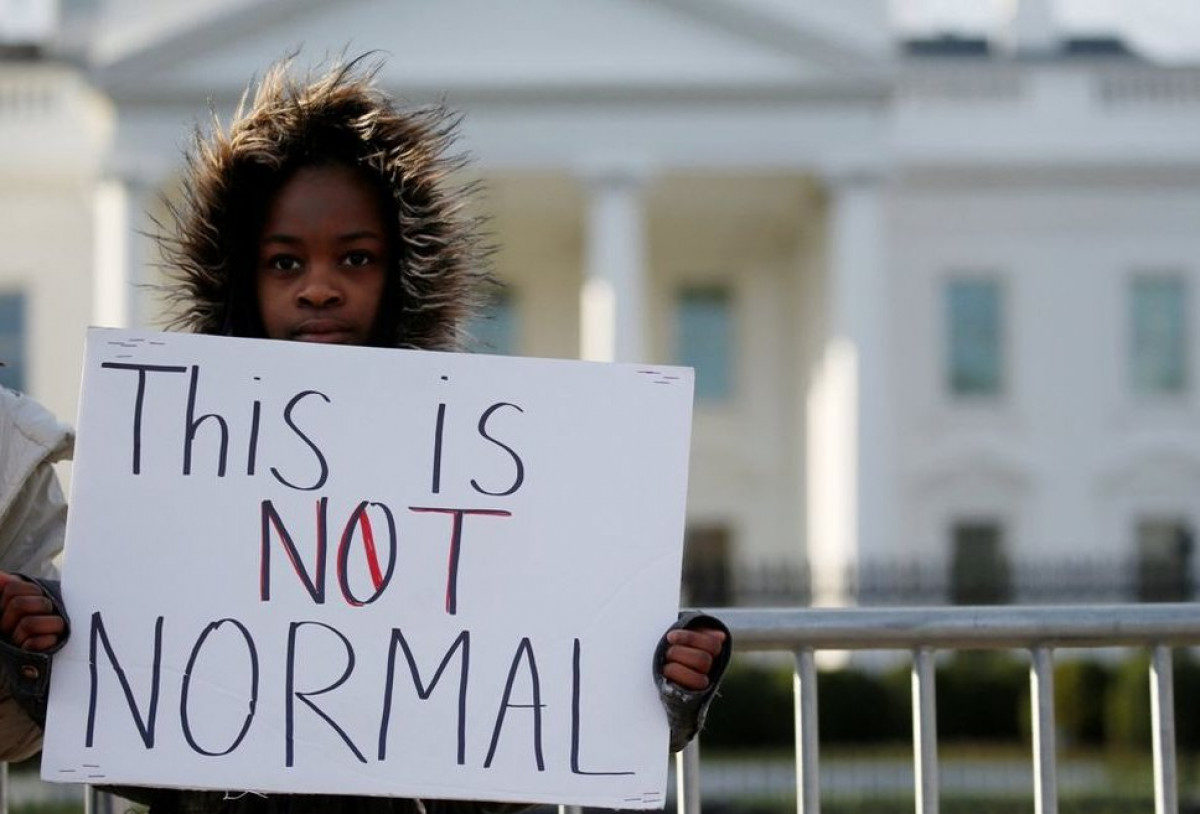
This is not normal, warns a girl in front of the White House. Author: Reuters Published: 27/03/2018 | 08:16 pm
United Against State-Sponsored Weapons

Youth United Against State-Sponsored Weapons
The great march, which is already listed as one of the most vibrant in Washington’s contemporary history, was organized in that capital city.
——————————————————————————————-
Author: Darcy Borrero Batista | darcy@granma.cu
27 March 2018 19:03:47
A CubaNews translation. Edited by Walter Lippmann.
There is “no such thing as an American citizen’. I always remember that quote from a friend from St. Louis, Missouri, an exchange student who spent a semester at the University of Havana. He explained it through the idea that Americans are very different from each other: 50 states on a single flag of stars and stripes. The thirteen (former) British colonies that united and expanded to form a single state.
That’s one of the reasons why many are surprised to see together in one voice, in Washington alone, more than half a million northerners on the march for a cause. It happened on Saturday, March 24th. One month and ten days after Marjory Stoneman Douglas High School in Parkland, Florida, where 17 people were killed by AR-15 rifle fire.
HOW WAS THE MARCH ORGANIZED FOR OUR LIVES ORGANIZED?
The great march, already listed as one of the most vibrant in Washington’s contemporary history, was organized in that capital. The goal is clear: to denounce the armed violence that is spreading like a virus in the nation of Lincoln.
Because of its sensitive nature, it overwhelmed the city of the White House and the Capitol and reached the entire country in the form of mass demonstrations united in the cry of “enough”.
It was the young survivors of the February 14 events in Parkland who drove it forward, but around them – Emma Gonzalez, David and Lauren Hogg, Cameron Kasky, Jaclyn Corin, Alex Wind, Sarah Chadwick, Dylan Baierlein and Matt Ditch, among others – many stood for the same struggle, both physically and in social networks and other media.
Although the heart of this cry was born in Florida; in the throat of that Washington of McDonald, Coca-Cola and Starbucks locations, tens of thousands of people took to the streets to demand restrictions on access to guns in a country that sadly stands out for an arms race that finds no goal: it is the nation with the most guns and rifles per capita on the globe.
New York, the artistic capital where the Statue of Liberty stands, also exceeded expectations.
A Yahoo News text states that the March For Our Lives and its international aftershocks “sent a powerful message against the legislative deadlock that has long prevented stricter gun laws from being adopted in the United States, where mass shootings in schools and universities have become frighteningly common.
So the march served as a reminder of similar massacres, such as Columbine and Sandy Hook.
THE ALLIANCE BETWEEN ARMS AND THE ESTABLISHMENT
This type of massacre is not new at all. Part of what theorists have called the alienation of individuals in capitalist societies where the culture of shooting reigns as a reflection of excessive production and “consumption” of weapons.
Much was said when, less than a month after the Parkland victims were buried, with their bodies still warm, the National Rifle Association (NRA) was holding an arms fair in Florida.
But nothing’s going on. Shocking the U.S. government seems like a Mission Impossible type of adventure, considering that arms agencies finance presidential campaigns.
For Jesús del Toro, in Yahoo Noticias, despite the enormous social support that the movement of these young people has, “articulated for now around the slogan and label #NeverAgain, the magnitude of its objectives and its detractors requires long-lasting work that goes beyond the marches of one or several days, which are incisive and relevant but only one component of a greater activism.
IN SOCIAL NETWORKS AND OTHER LATITUDES
Alumni of the Parkland school and other allies succeeded in setting up a digital communication laboratory, designed to spread their message effectively, so that society will remember it and take it with them as a banner of peace. To achieve this goal, the teenagers took to social networks and other virtual media as a campaign scenario.
Although they did not give statements about the location of the lab, they told the press that it is especially dedicated to conceptualizing and producing content to drive #NeverAgain’s ideas and proposals for change.
With the symbology of the meme and also with YouTube videos and content for various platforms such as Snapchat, Instagram or Twitter, the #NeverAgain movement and its communications lab reflect a very unique “theatre of operations”, which Columbine did not have in 1999, for example, and prevented a horizontal form of communication, “you to you”, from reaching people better.
This showed the great national support of young people from all over the country and figures from the world of politics and entertainment. Among them, Democratic lawmakers, such as Senate Minority Leader Charles Schumer and Reps. Gwen Moore, Eric Swalwell, Paul Tonko and Sheila Jackson Lee, changed out their Twitter picture for one labeled #Neveragain.
For these, hand in hand with the youth, it’s now time to update the Second Amendment, that constitutional amendment that protects the right to bear arms.
From other geographical spaces, cut off by the proximity of digital devices, expressions of support were also made. as one Twitter user wrote: “Good luck from Scotland to all those who will be protesting in America, stay proud and speak up.
Perhaps the most encouraging thing in the midst of these actions is that, in the same country where many vote for misogyny, white supremacy, among other forms of intolerance, the same thing breaks the inertia to make change possible, precisely because of the potential victims themselves.
The result is that today it can be read on many platforms that the teenagers who survived the AR-15 attack in Parkland became gun control advocates and have not only counterpointed social networking with gun rights activists. Despite them, these students demand laws that promote safety and the right to life.
Subscribe to Blog via Email
| M | T | W | T | F | S | S |
|---|---|---|---|---|---|---|
| 1 | 2 | 3 | 4 | 5 | 6 | 7 |
| 8 | 9 | 10 | 11 | 12 | 13 | 14 |
| 15 | 16 | 17 | 18 | 19 | 20 | 21 |
| 22 | 23 | 24 | 25 | 26 | 27 | 28 |
| 29 | 30 | 31 | ||||









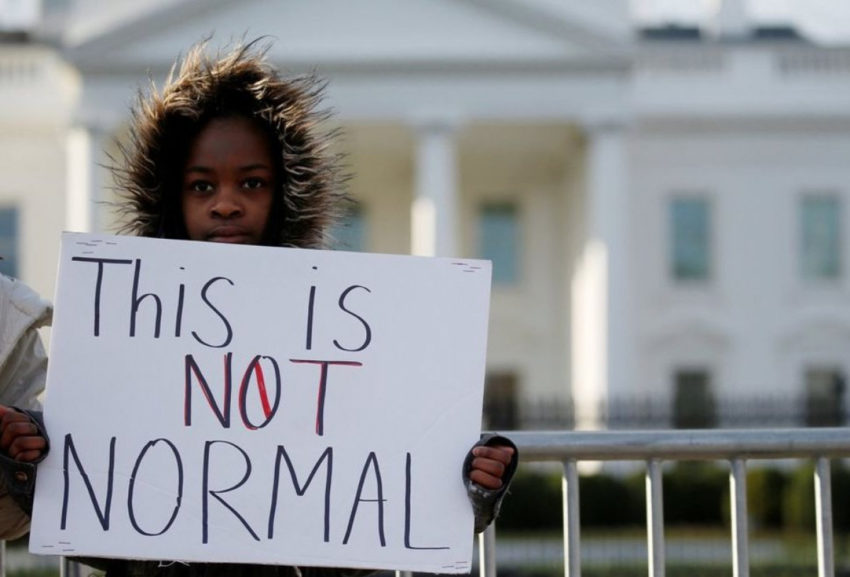
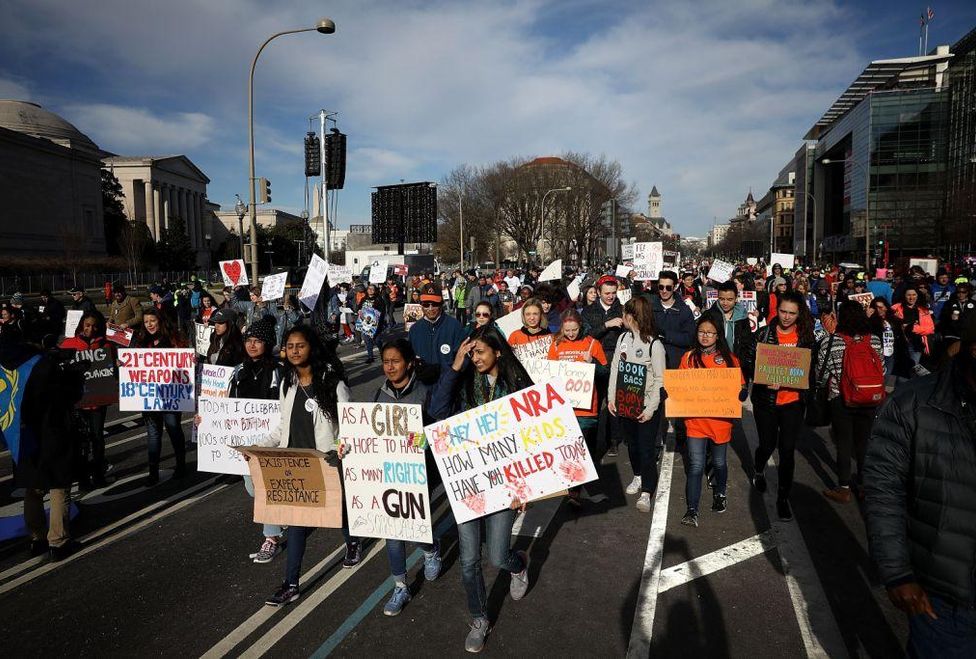


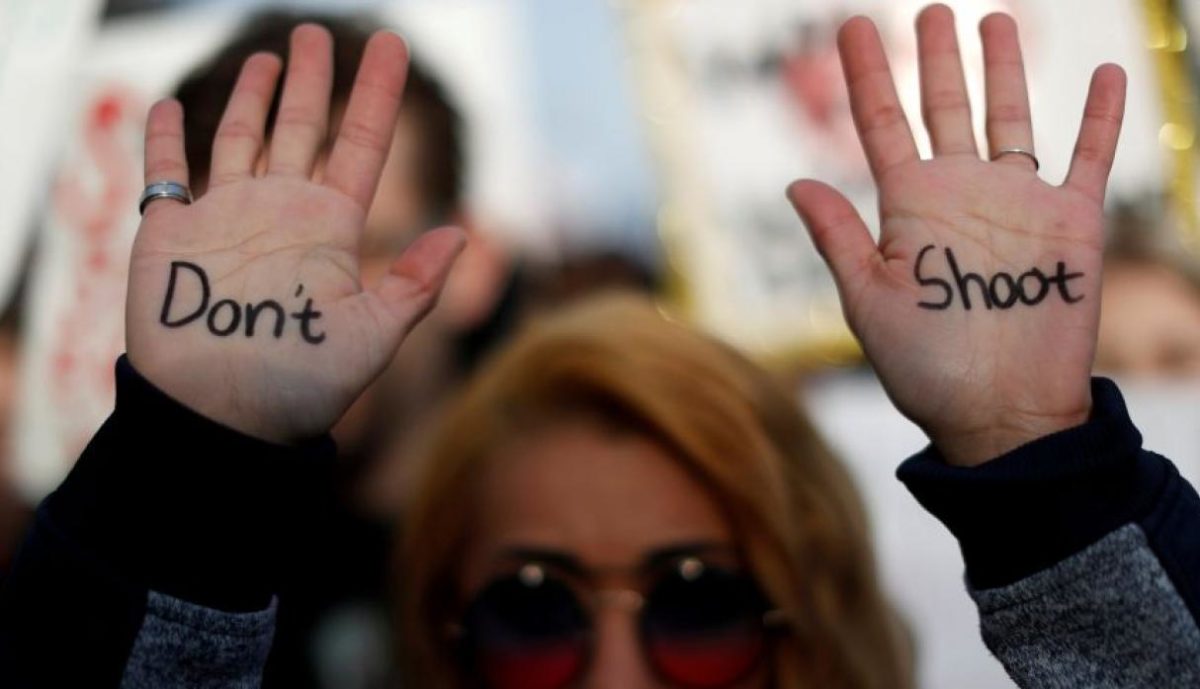
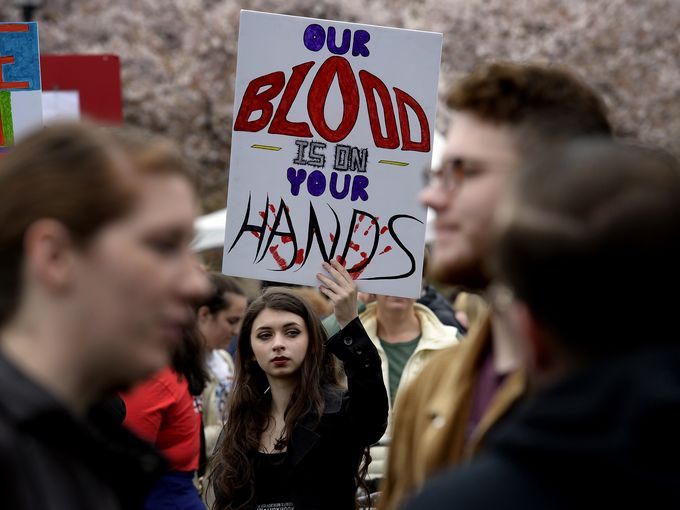
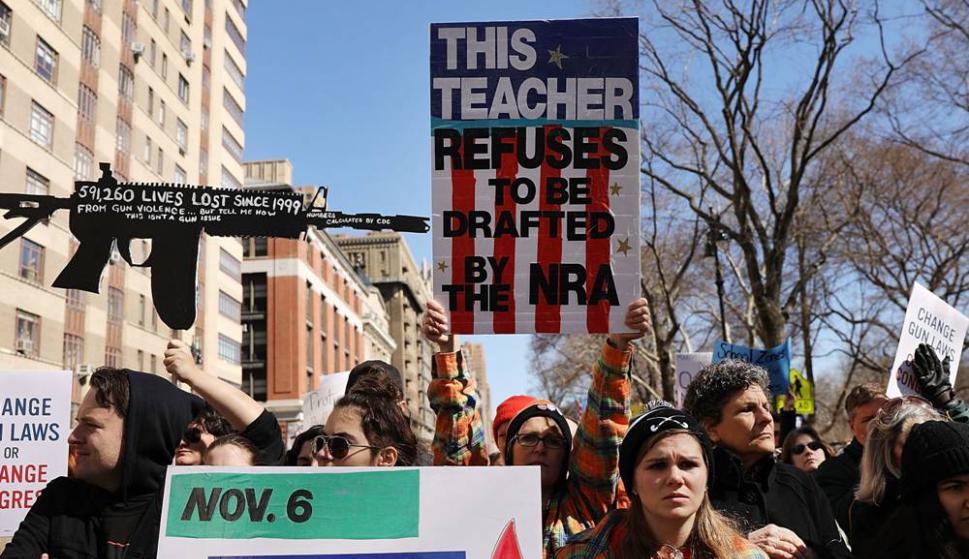

You must be logged in to post a comment.